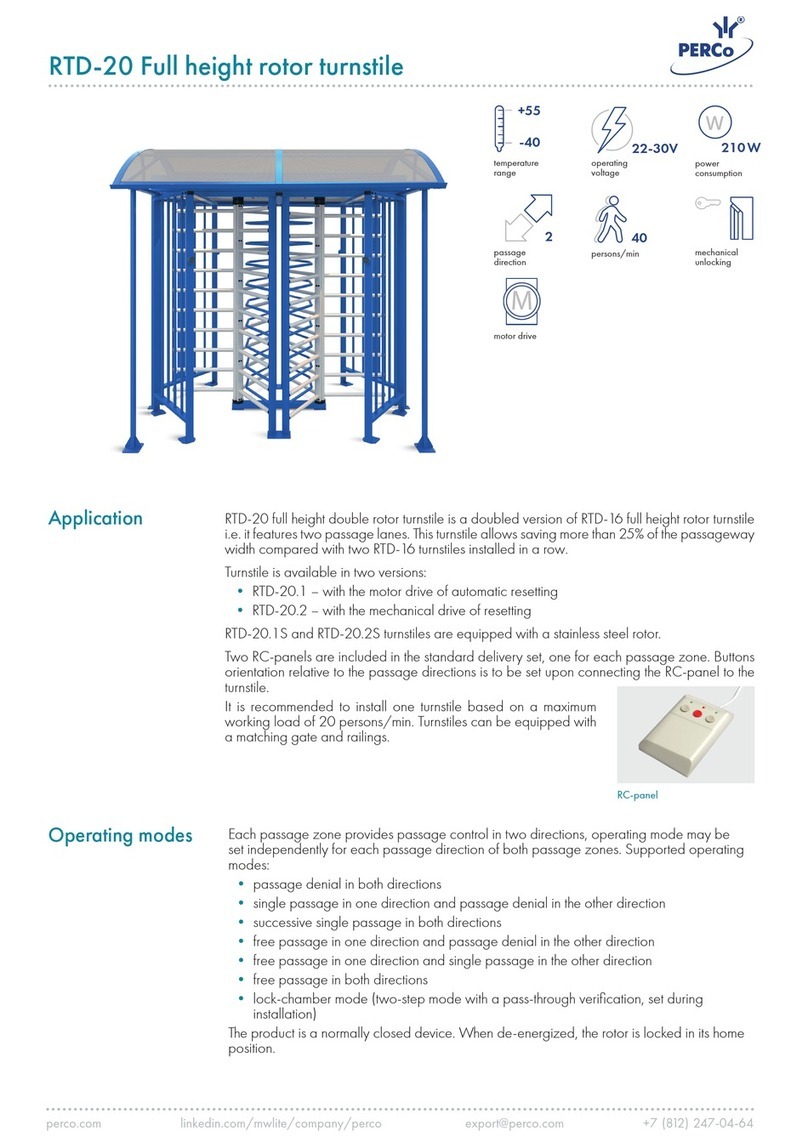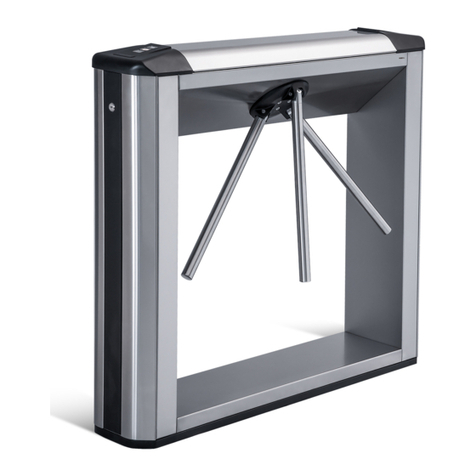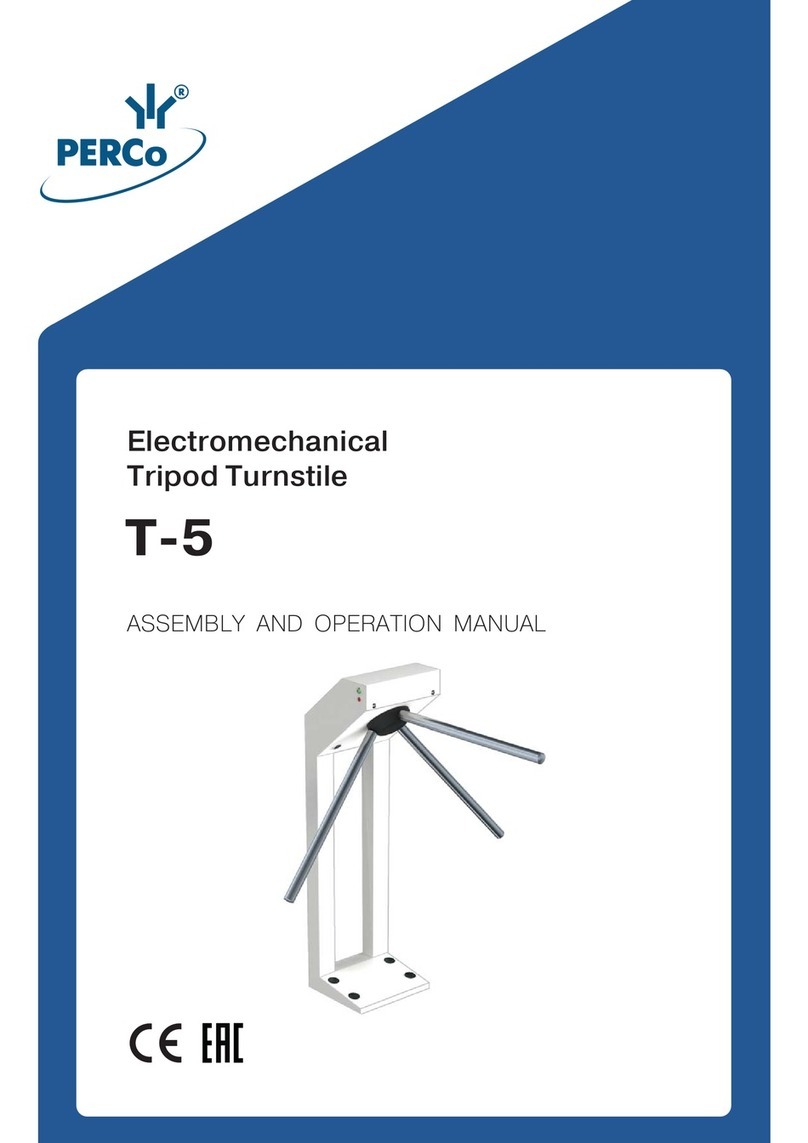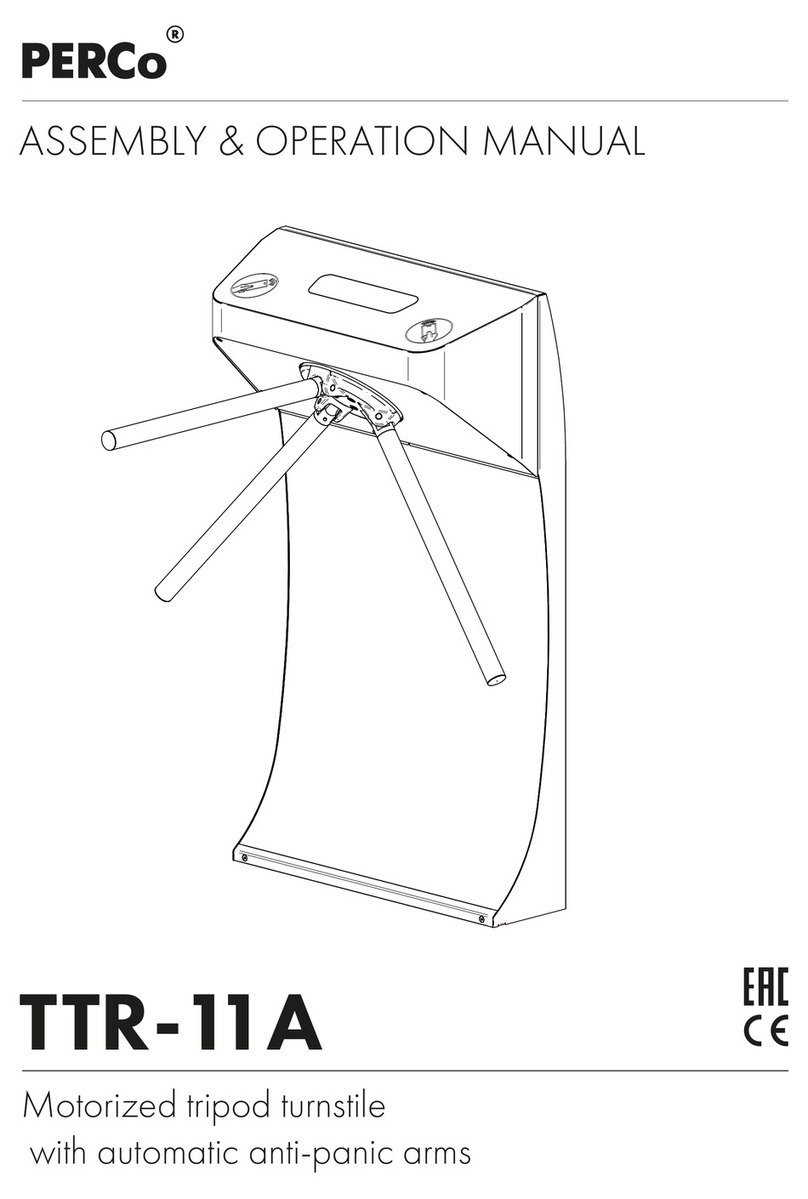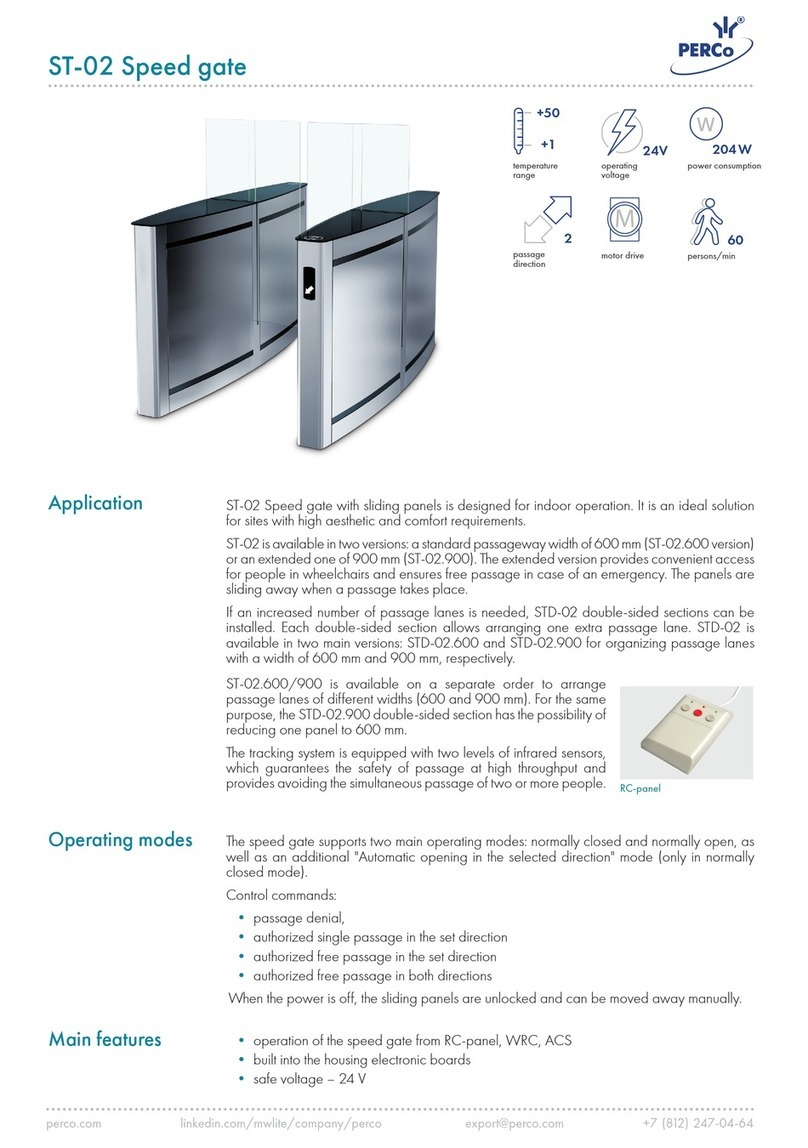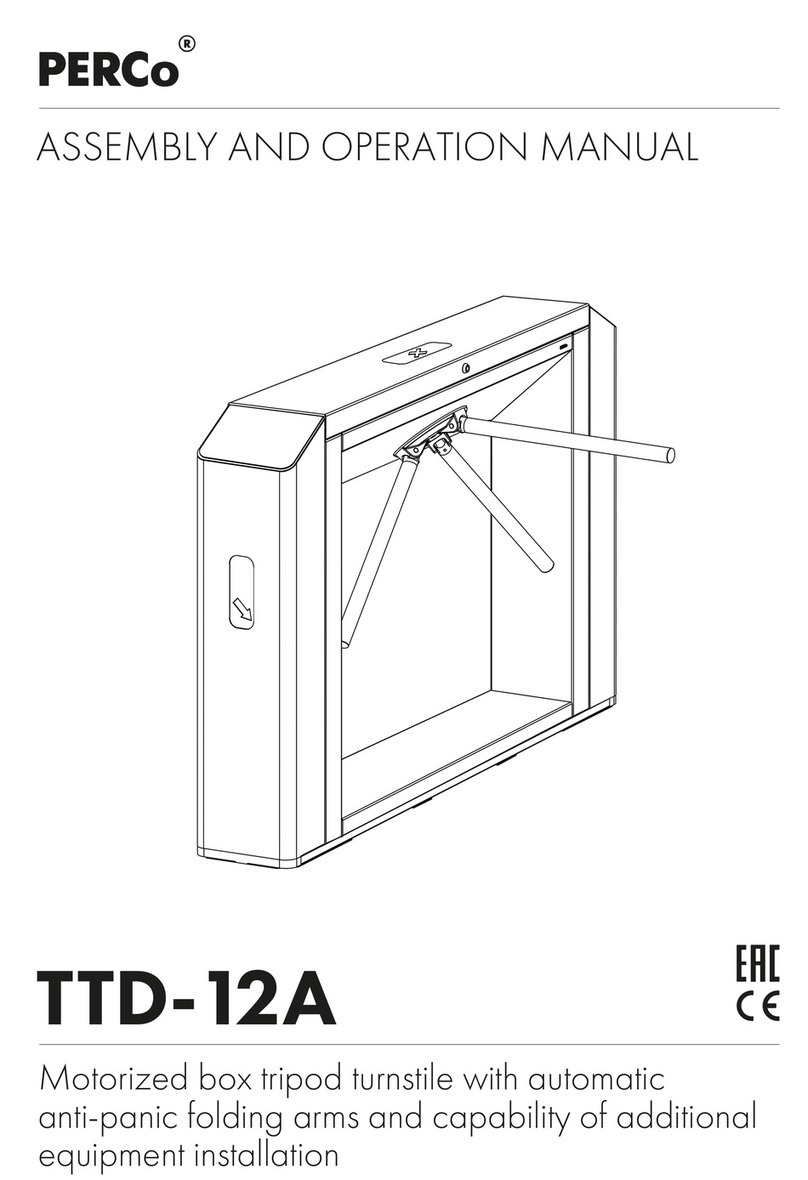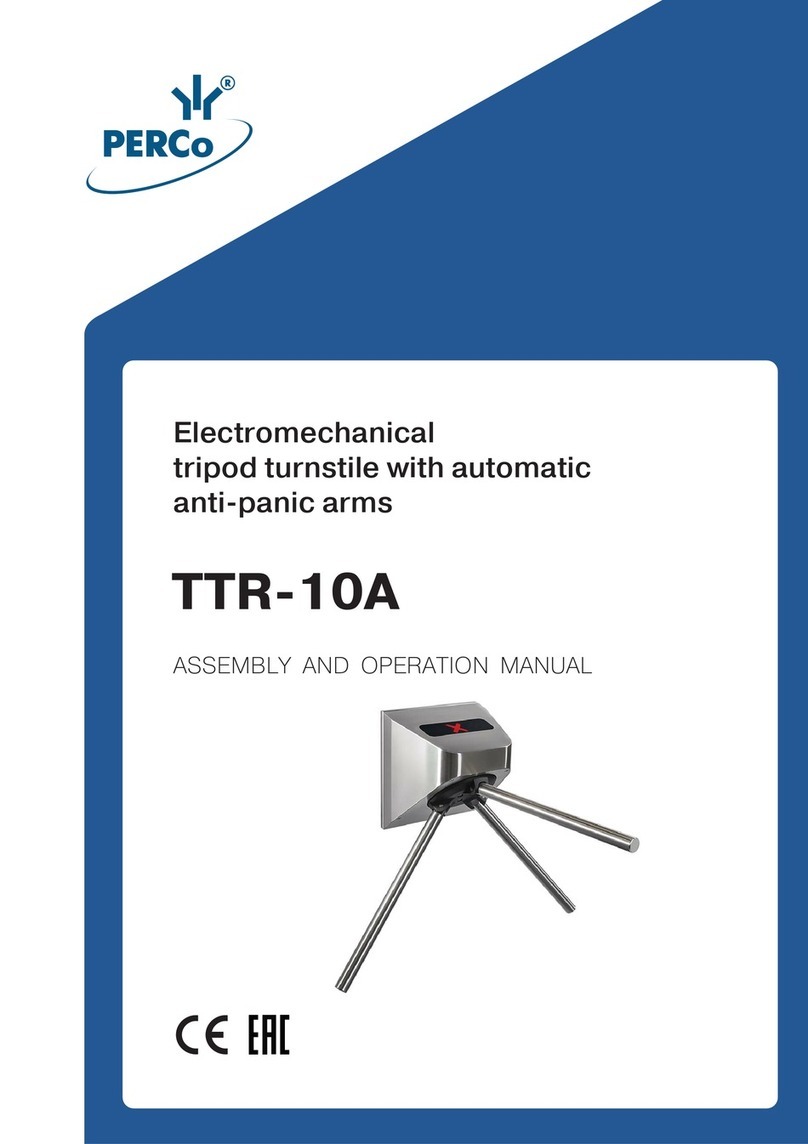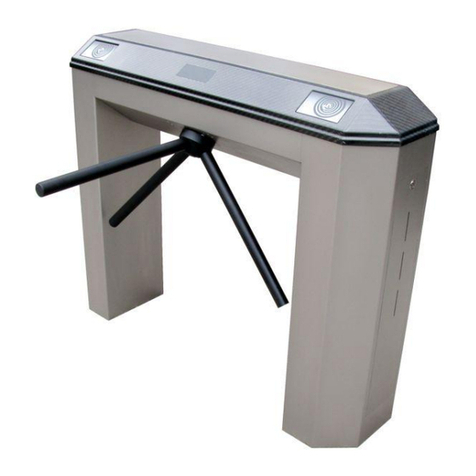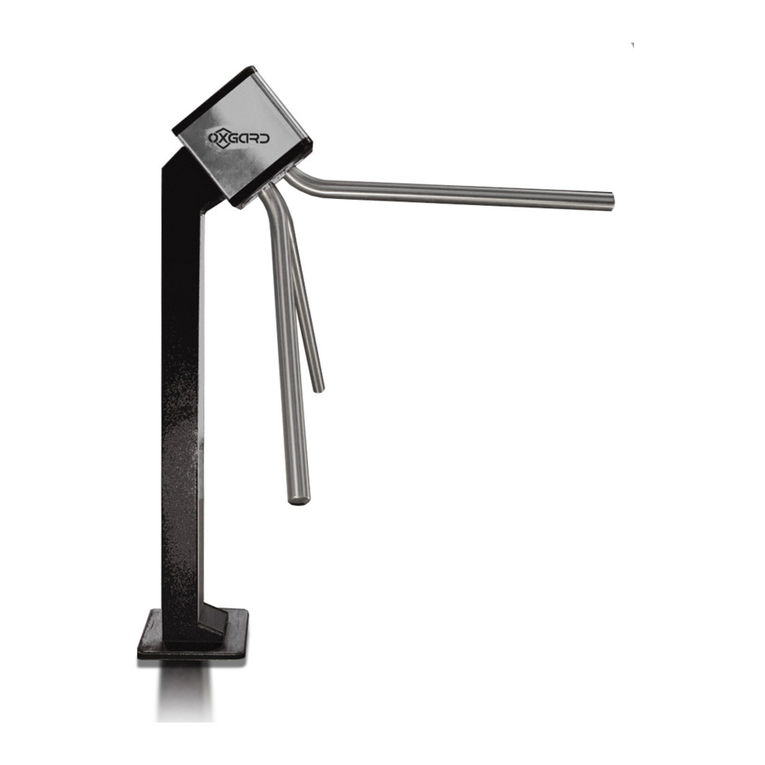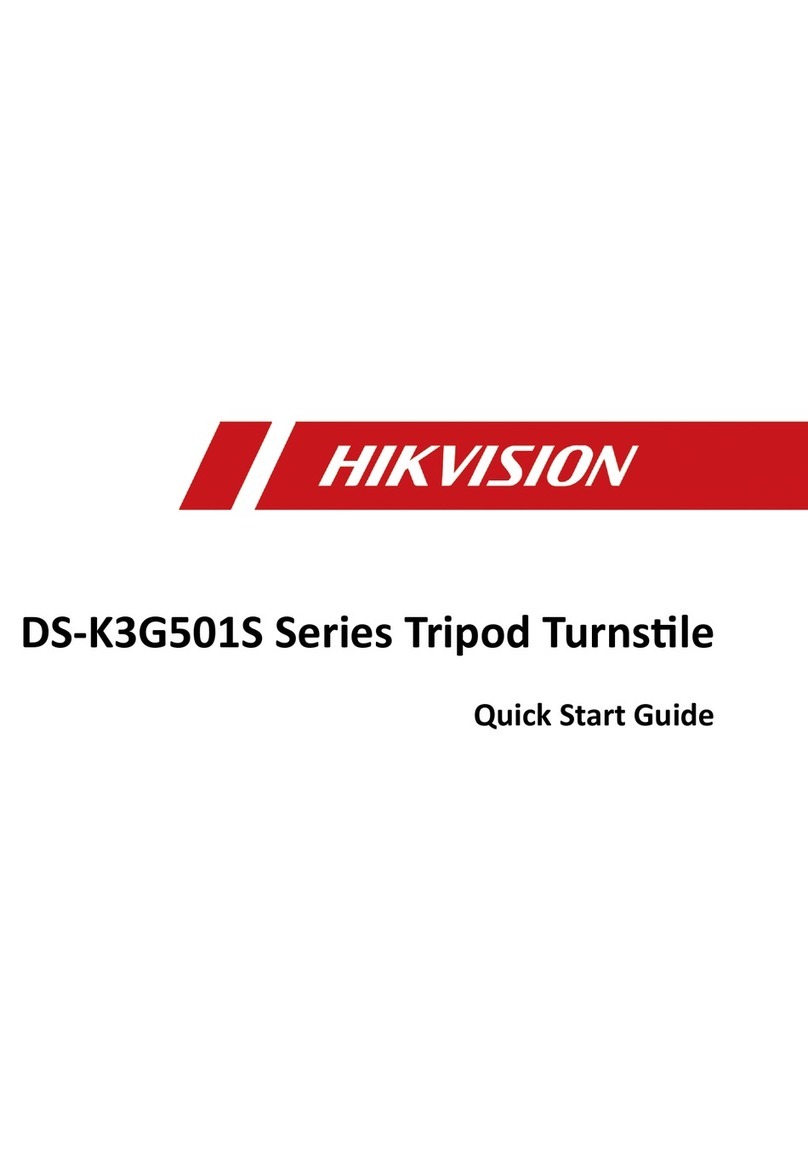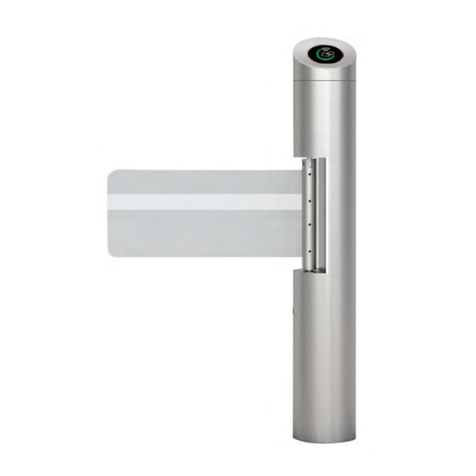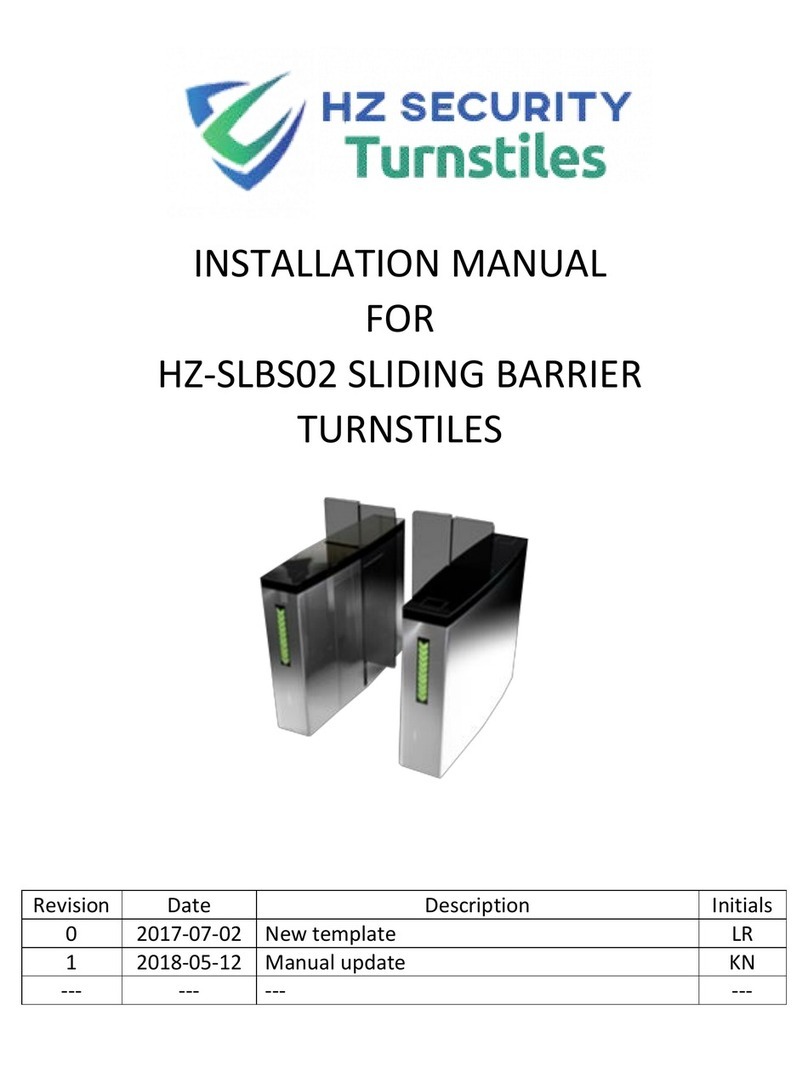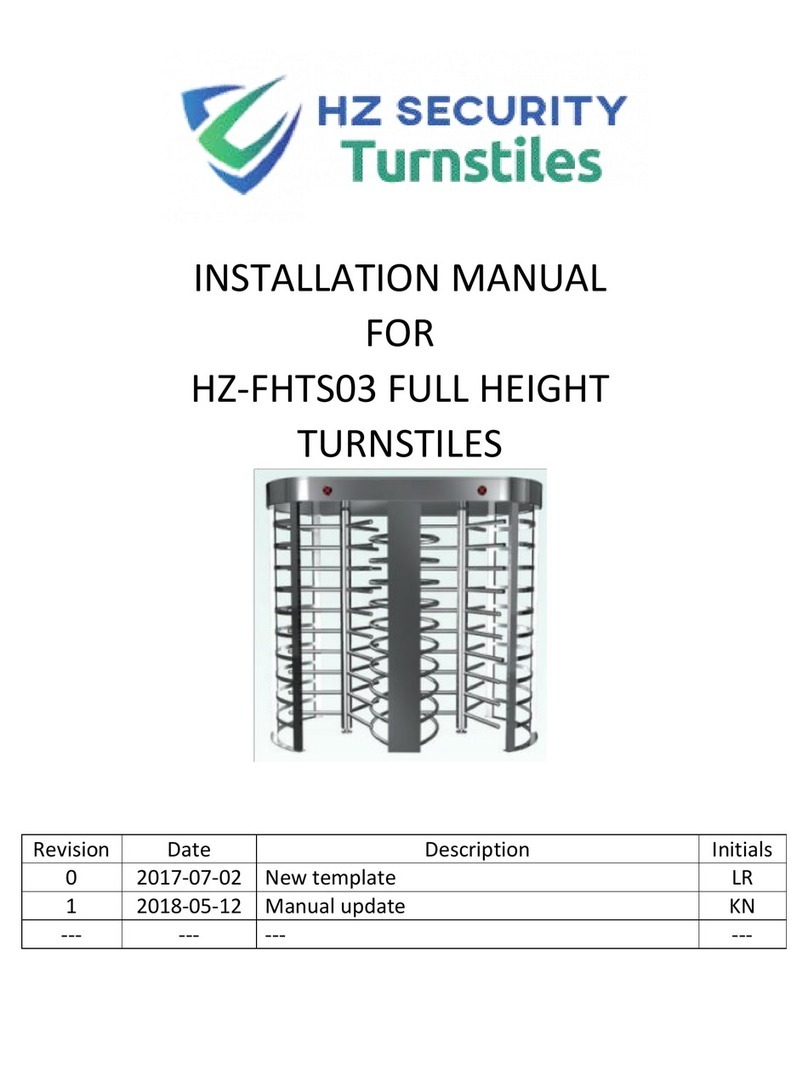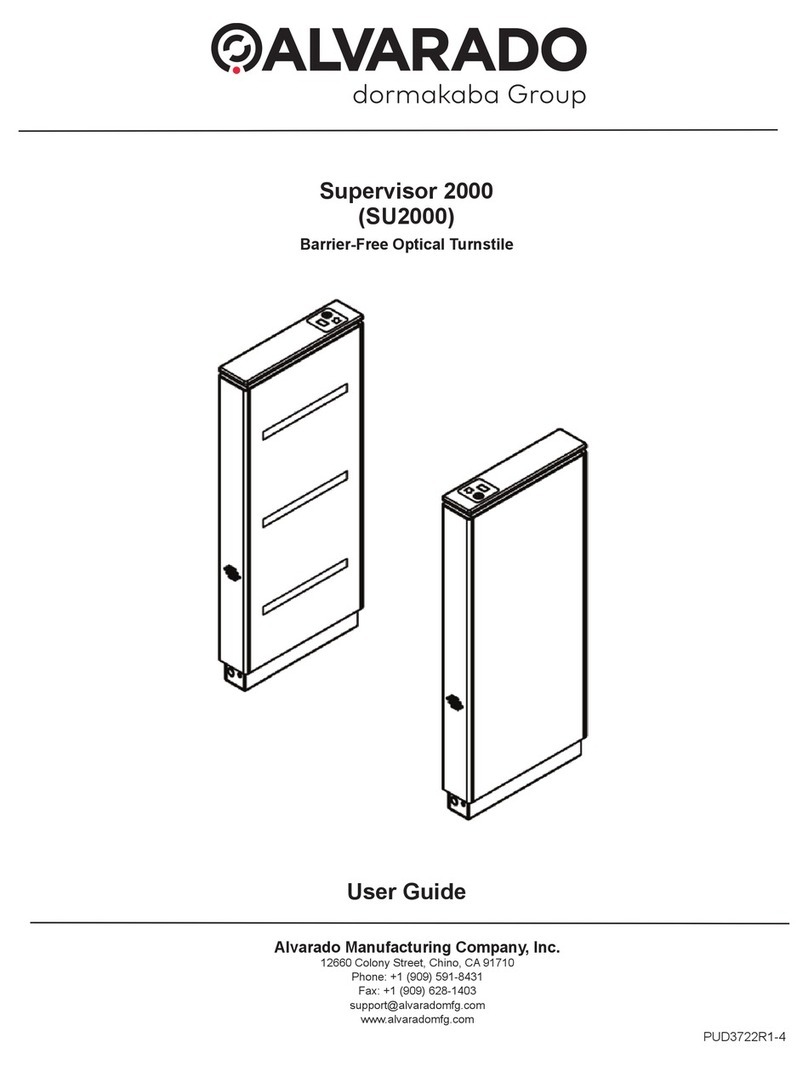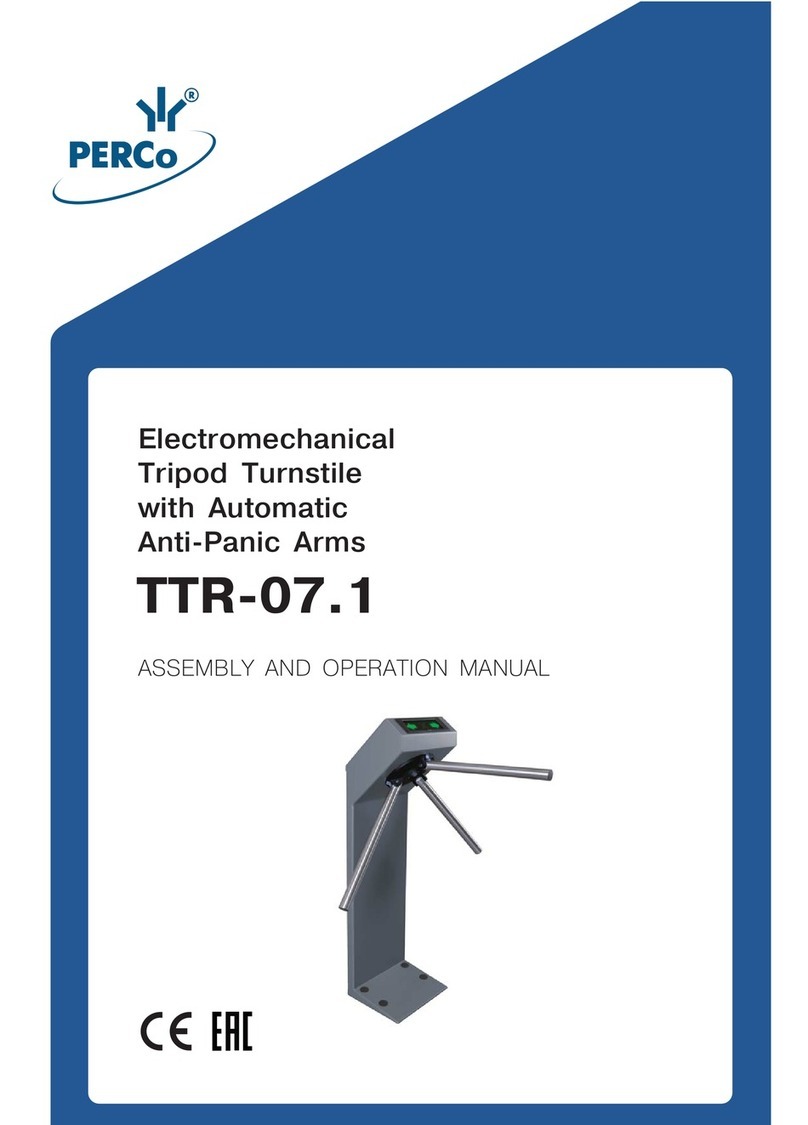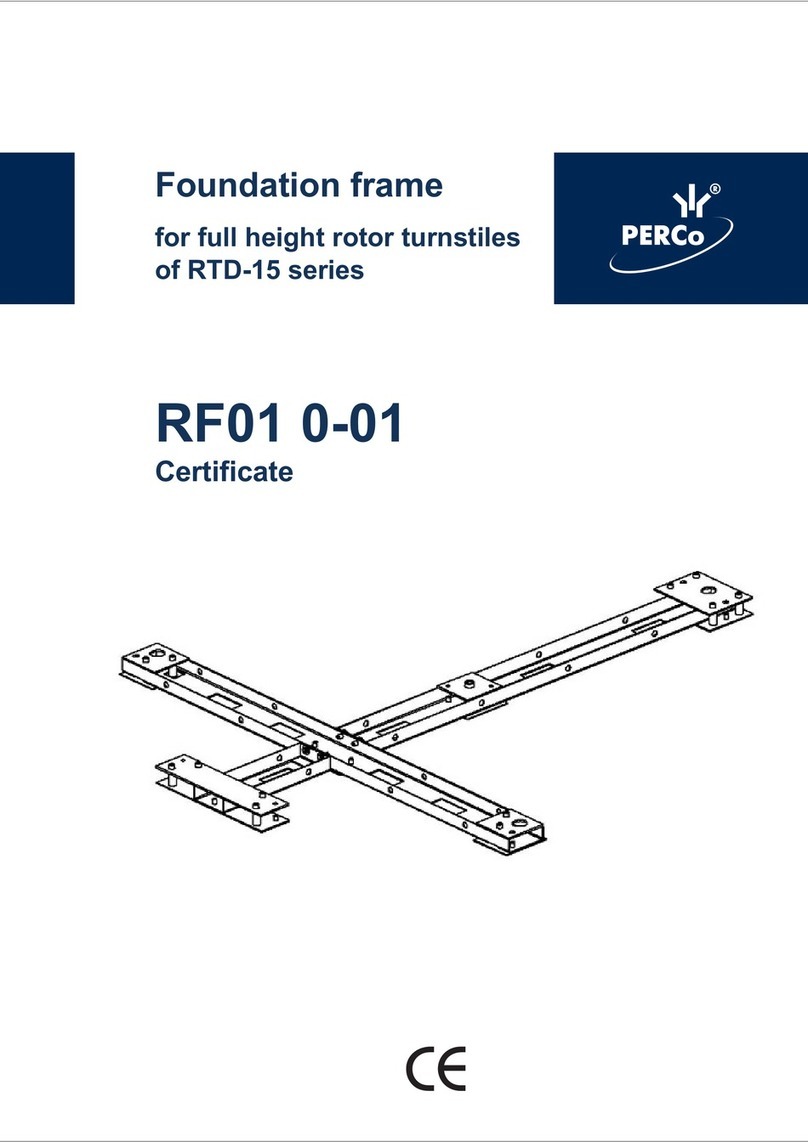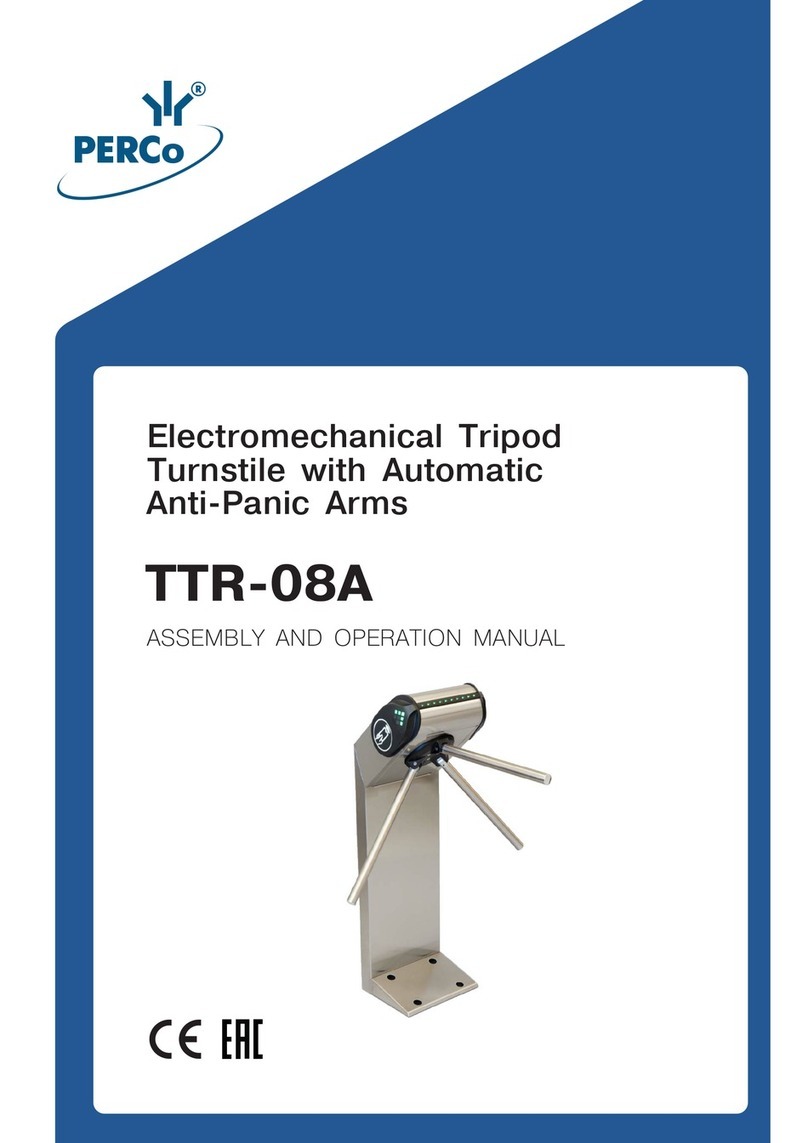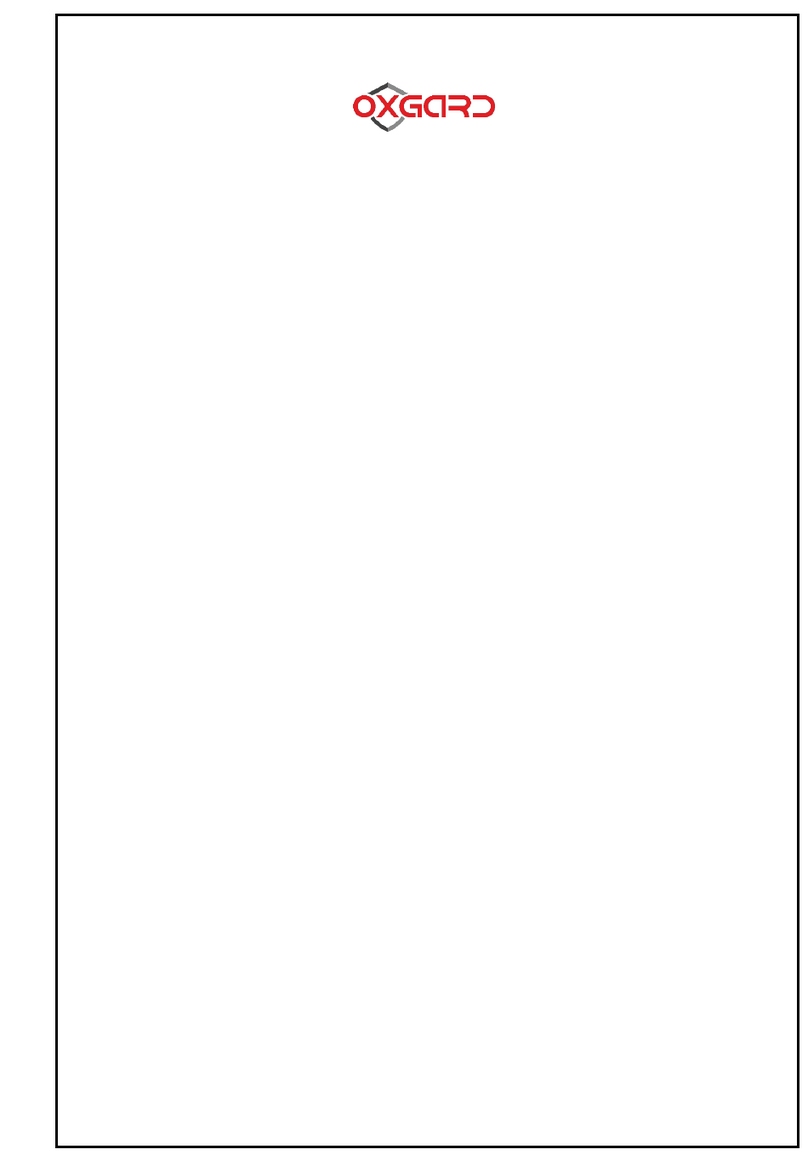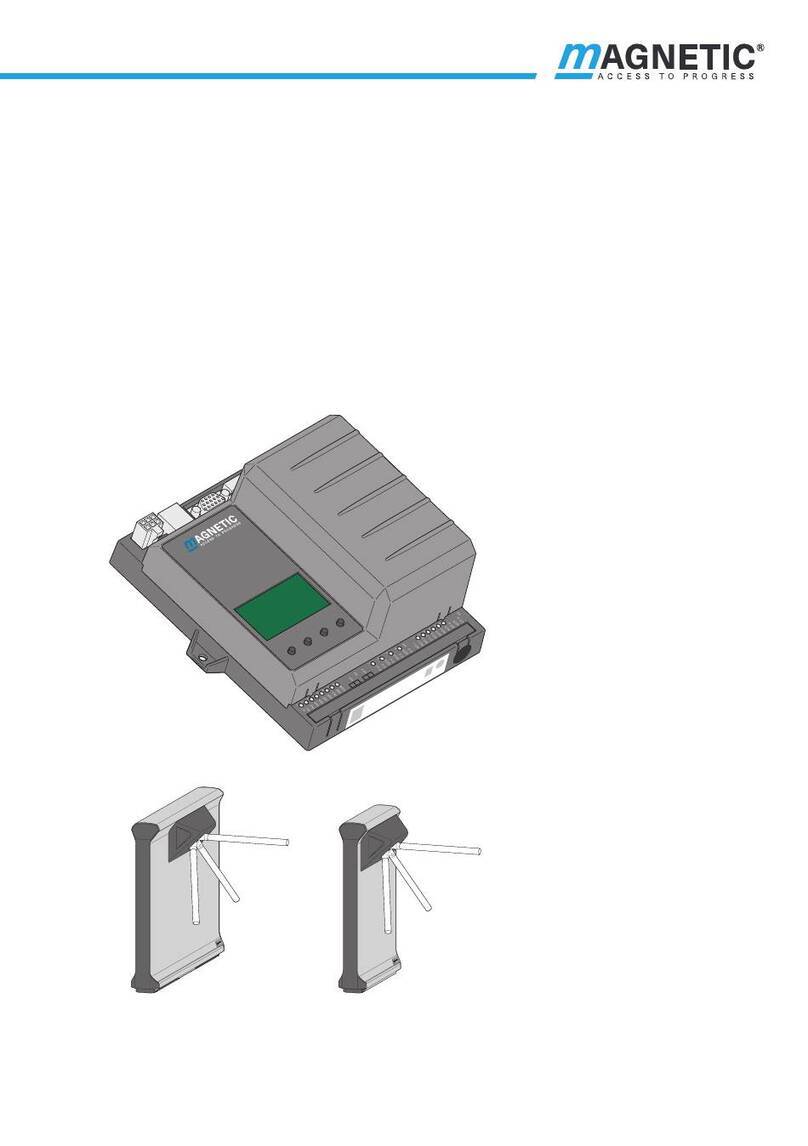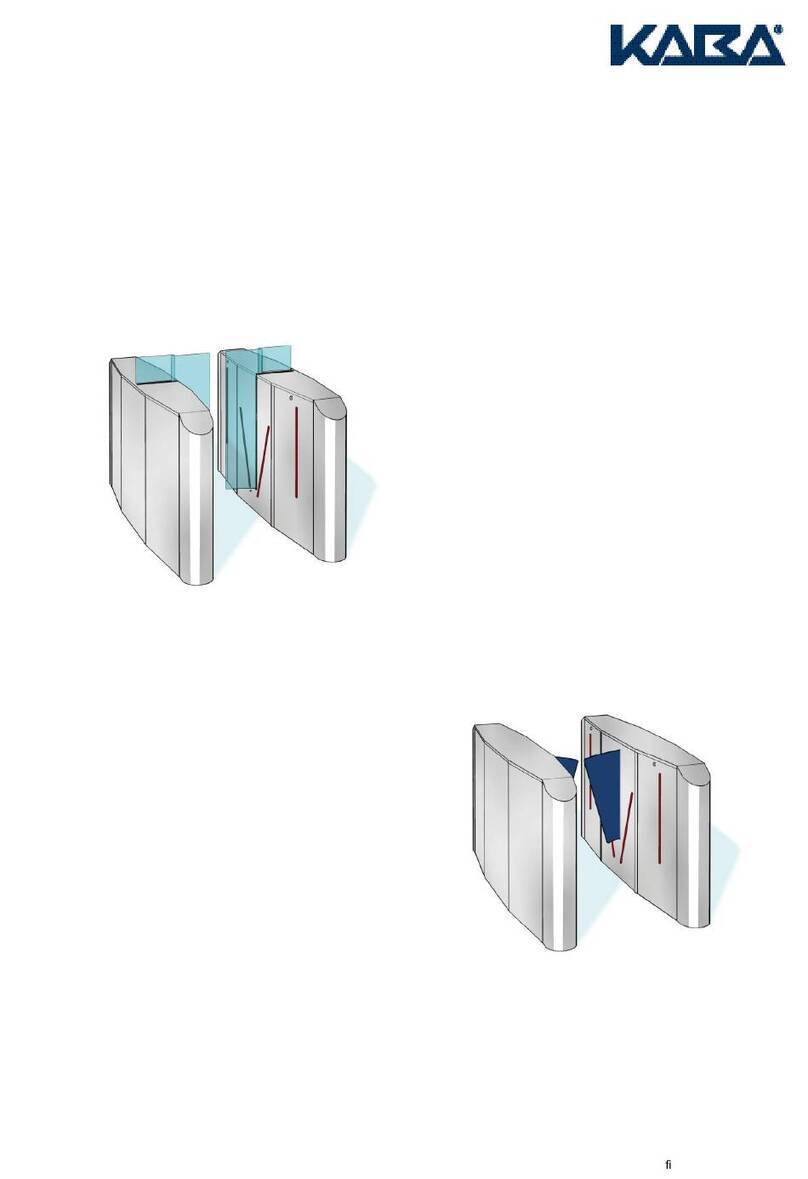
Operation manual
8
The CLB (see Fig. 3) contains:
•control mechanism connector – “X1” (Control) (using the turnstile cable for connection to the
“X1” connector of the control mechanism);
•connector block for connection of the RC panel / WRC / ACS controller inputs and the
emergency unblocking device — “XT1.L” (In);
•connector block for connection of a siren and ACS outputs, providing the turnstile status data
to the ACS controller – “XT1.H” (Out);
•intrusion detector connector block – “XT2” (“Detector”);
•turnstile power supply connector block – “XT3” (“+12VDC”);
•remote indicator connector blocks (open/closed, one indicator per each direction) – “XT4” and
“XT5” (“Light A” and “Light B” accordingly);
•J1 connector for turnstile control mode selection (see below);
•J2 connector for programming.
5.2.5 Input and output signals and their parameters when operating the turnstile
The microcontroller set on the CLB processes the incoming commands (i.e. traces the status of
contacts “Unlock A”, “Stop”, “Unlock B” and “Fire Alarm”), keeps tracing the signals from the arm
rotation optical sensors and from the intruder detector (contact “Detector”), and sends commands
to the control mechanism basing on those signals. It also processes signals for the external
devices: indication on the RC panel (“Led A”, “Led Stop” and “Led B”), the signal of hub turning in
the corresponding direction (“PASS А” and “PASS В”), the signal about readiness of the turnstile to
effect the current command (“Ready”), alarm output signal (“Alarm”) and relays the signal of the
current status of the intruder detector (“Det Out”).
The turnstile is operated by input of a low-level signal to the “XT1.L” connector block contacts
“Unlock A”, “Unlock B” and “Stop” relatively to the “GND” contact. As the control element there can
be used a normally open relay contact or a circuit with open collector output at that. At the
emergency unblocking device input the turnstile control is carried out by elimination of a low-level
signal from the “Fire Alarm” contact relatively to the “GND” contact. As the control element there
can be used a normally closed relay contact or a circuit with open collector output at that (see
Fig. 5 and 6).
Note:
For generating a high-
level signal at all the input contacts (“Unlock A”, “Stop”, “Unlock B”,
“Fire Alarm” and “Detector”) “2 kOhm” resistors connected to the power supply bus “+ 5V”
are used.
The control element provides for the following signal characteristics:
Relay contact as the control element:
minimum switched current ........................................................................................... 2 mA
closed contact resistance
(considering resistance of the connected cable) ............................................. max 300 Ohm
Circuit with open-collector output as the control element:
voltage at closed contact (low - level signal at the CLB input)................................ max 0.8V
The relays “PASS A” (contacts “PASS A” and “Common”), “PASS B” (contacts “PASS B” and
“Common”), “Ready” (contacts “Ready” and “Common”), “Detector” (contacts “Det Out” and
“Common”) and “Alarm” (contacts “Alarm 1” and “Alarm 2”) have normally open contacts. The
“Common” contact, at that, is not connected to the CLB power supply negative terminal. In the
initial state (inactive, when the power is on) the relay contacts “PASS A”, “PASS B”, “Ready” and
“Detector” are closed (voltage is supplied to the relay coil), the relay contacts “Alarm” are broken
(voltage is not supplied to the relay coil). The CLB relay operation/release is indicated by lighting
up/going down of the red test indicators, located near the corresponding relays (see Fig.3).
The output cascades for “PASS A”, “PASS B”, “Ready”, “Det Out” and “Alarm” are the contacts
with the following signal characteristics (see Fig. 7):
maximum AC commutation voltage.....................................................................................42 V
maximum switched current...............................................................................................0.25 A
closed contact resistance ....................................................................................max 0.15 Ohm
